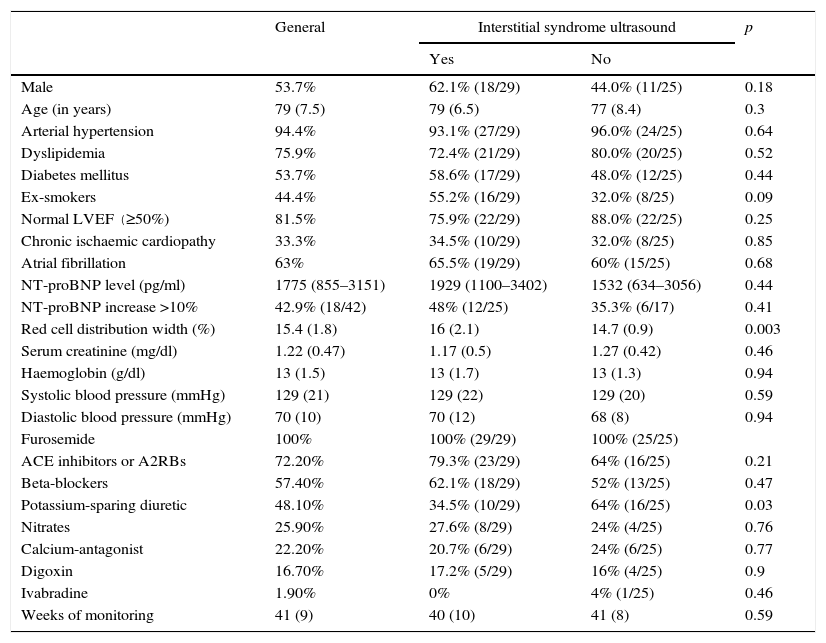To assess the prognostic value of lung ultrasound for patients with chronic heart failure.
MethodsProspective observational cohort study, in which a lung ultrasound was performed on 54 patients at a heart failure outpatient consultation. Ultrasonography was classified as positive or negative for ultrasound interstitial syndrome depending on the number of B lines observed. Patients were followed up for six months; considering emergency visits, readmissions and deaths due to heart failure as markers of poor prognosis.
Results53.7% (29) of the patients had ultrasound interstitial syndrome. Among them, 48.3% (14) were readmitted, compared to 16% (4) of those without the syndrome (p=.012). Considering any of the events previously described as end points (readmissions, emergencies and deaths), we found that in the group of patients with ultrasound interstitial syndrome, 55.2% (16) had at least one of these complications, compared to 20% (5) of participants without the syndrome (p=.008).
ConclusionsLung ultrasound in the outpatient setting is useful in predicting which patients are at increased risk of heart failure decompensation in the mid-term.
Valorar la utilidad pronóstica de la ecografía pulmonar en pacientes con insuficiencia cardiaca.
MétodosEstudio observacional de cohortes prospectivo, en el que se realizó una ecografía pulmonar a 54 pacientes en seguimiento ambulatorio por insuficiencia cardiaca. La ecografía se clasificó como positiva o negativa para síndrome intersticial ecográfico según el número de líneas B observadas. Se realizó un seguimiento durante 6 meses, considerando eventos indicativos de mal pronóstico las visitas a urgencias, reingresos y fallecimientos debidos a insuficiencia cardiaca.
ResultadosEl 53,7% (29) de los enfermos presentaban síndrome intersticial ecográfico. De ellos, reingresaron el 48,3% (14) frente al 16% (4) de los que no tenían dicho síndrome (p=0,012). Considerando como variable final conjunta la necesidad de reingreso, las urgencias y fallecimientos por insuficiencia cardiaca, el 55,2% (16) de los pacientes con síndrome intersticial presentaron al menos una de estas complicaciones, frente al 20% (5) de los participantes sin el síndrome (p=0,008).
ConclusionesLa ecografía en el ámbito ambulatorio es útil para predecir qué enfermos tienen mayor riesgo de descompensación de insuficiencia cardiaca a medio plazo.
Artículo
Comprando el artículo el PDF del mismo podrá ser descargado
Precio 19,34 €
Comprar ahora








